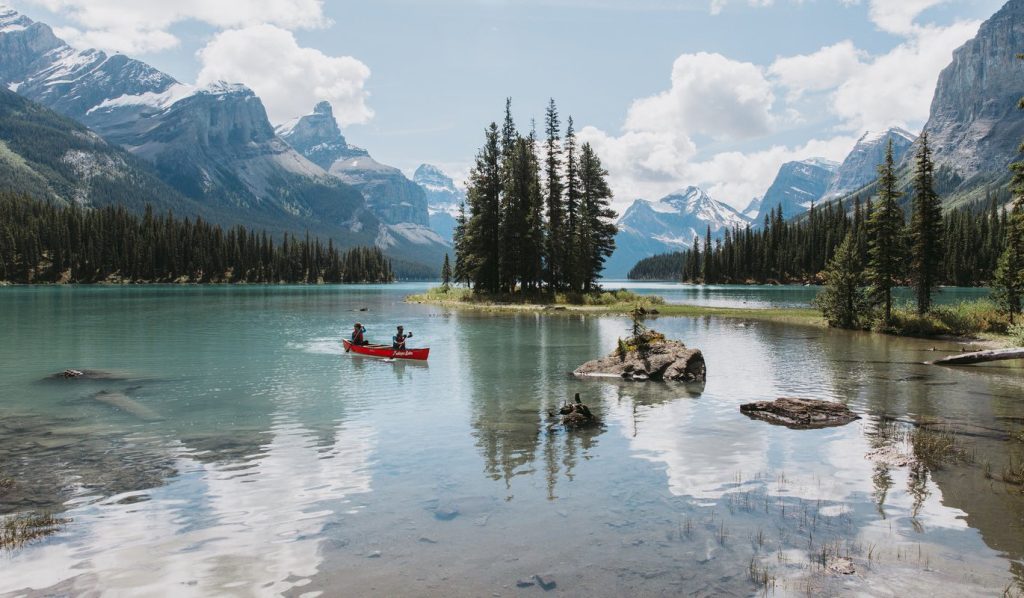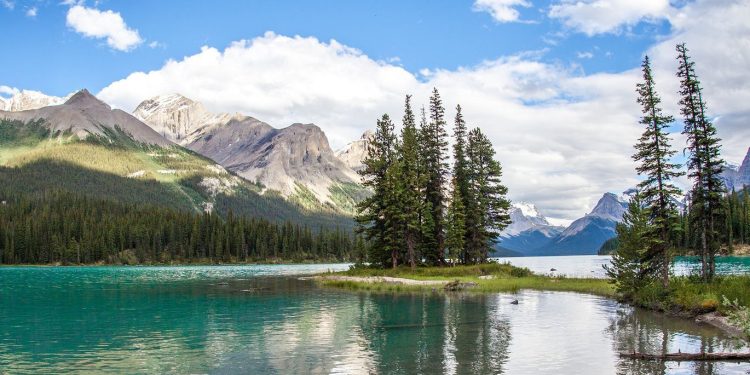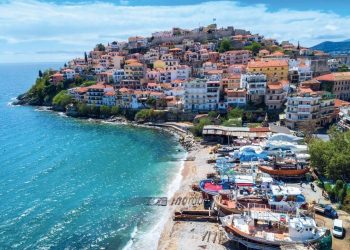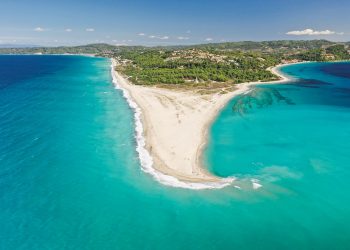At dawn, a thick veil of fog blankets the lake, erasing the horizon and turning the world into a watercolor of white and silver. Through the mist, dark pines and mountain reflections appear and vanish like ghosts, leaving visitors suspended between earth and sky.
The island of healing
For the region’s Indigenous peoples, Spirit Island is far more than a stunning sight — it is a sacred place of healing and renewal. Known traditionally as the “Island of Healing,” it has long been used for spiritual ceremonies and reflection.
Today, only members of the local First Nations are allowed to set foot on the island. Visitors can approach by boat, but they must admire its serenity from the water, preserving the island’s sacred stillness.

From legend to icon
Spirit Island first gained international fame in the mid-20th century when a photograph displayed in New York’s Grand Central Station revealed its ethereal beauty to the world. Since then, it has appeared in countless documentaries, postcards, and travel campaigns, becoming one of Canada’s most photographed landmarks.
Every year, thousands paddle across Maligne Lake to witness its pine-covered silhouette framed by snowcapped peaks — yet few realize the island’s spiritual significance to the people who once called this land home.
Reconnecting with the land
Spirit Island embodies the restoration of balance between humans and nature. The surrounding mountains are believed to hold the spirits of ancestors, watching over the waters below.
After being displaced over a century ago, Indigenous communities have begun returning to the island to perform ceremonies once again, rekindling an ancient bond that transcends generations.
A message for the world
In an era marked by climate change and over-tourism, Spirit Island stands as a symbol of preservation and respect for nature. Its guardians remind visitors:
“When you approach this place, be still and listen. Nature will tell you its story.”













